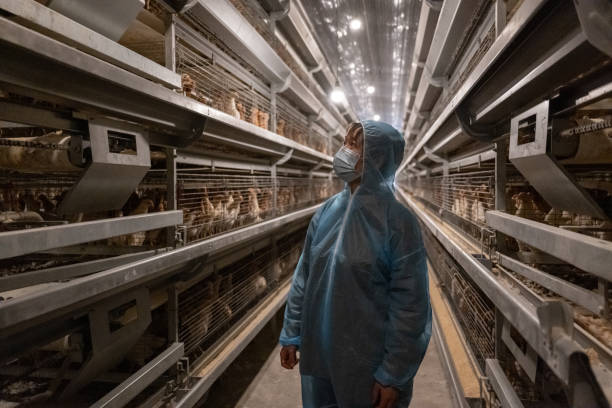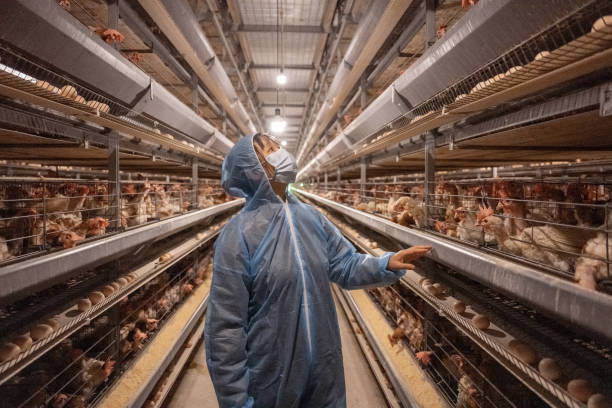Battery Chicken Cages for 30000 Birds: Optimizing Your Uganda Poultry Farm
Battery Chicken Cages for 30000 Birds: Optimizing Your Uganda Poultry Farm
Uganda’s poultry industry is booming, presenting a significant opportunity for farmers aiming to scale up their operations and meet the growing demand for eggs. For those planning to house 30,000 birds, choosing the right housing system is critical. Battery chicken cages, while sometimes controversial, offer a highly efficient and manageable solution when implemented responsibly and with animal welfare considerations in mind. This article will delve into the benefits of using battery chicken cages for a large-scale poultry farm in Uganda, focusing on optimization strategies, cage selection, and the overall impact on farm productivity and profitability. We’ll also explore ethical considerations and best practices to ensure sustainable and responsible farming.
Understanding Battery Chicken Cages
Battery chicken cages are a type of housing system used primarily for laying hens. They typically consist of rows of tiered cages made of wire or plastic mesh. Each cage houses a small group of hens, providing them with access to food and water. The design allows for easy egg collection and manure removal, which contributes to improved hygiene and reduced disease risk. There are different types of battery cages available, each with its own features and benefits. The selection should be done with a clear business objectives in mind and knowledge of poultry farming best practices.
Benefits of Using Battery Chicken Cages for a 30,000-Bird Farm
For a farm of this size, the advantages of battery cages are substantial:
Increased Space Efficiency: Battery cages maximize the use of available space. Housing 30,000 birds in a cage system requires significantly less land than free-range or deep-litter systems. This is particularly important in Uganda, where land can be a valuable resource.
Improved Hygiene and Disease Control: The design makes it easier to maintain a clean environment. Droppings fall through the wire mesh, preventing the hens from coming into contact with them. This reduces the risk of disease outbreaks, which can be devastating to a large flock. Furthermore, targeted medication and treatment are far more effective in a caged environment.
Easier Egg Collection: Egg collection is streamlined and efficient. Eggs roll out of the cages and onto a collection belt, reducing labor costs and minimizing egg breakage. This is a significant advantage for a large-scale operation. Automated egg collection systems further increase efficiency in this area.
Reduced Feed Wastage: Cages allow for better control over feed consumption. Feed is provided in troughs within the cages, minimizing spillage and wastage. This can translate into significant cost savings, especially when feeding a large flock.
Better Monitoring and Management: With battery cages, it’s easier to monitor the health and productivity of individual birds or small groups. This allows farmers to quickly identify and address any problems, such as disease or decreased egg production. Individual cages allow for swift interventions preventing losses.
Optimal Cage Selection for Your Uganda Poultry Farm
Choosing the right battery chicken cages is crucial for the success of your operation. Consider the following factors:
Cage Dimensions: Ensure the cages provide adequate space for the hens to move comfortably. While regulations vary, providing sufficient space per bird is essential for their well-being and productivity.
Material Quality: The cages should be made of durable, rust-resistant materials that can withstand the harsh conditions of a poultry farm. Galvanized steel is a popular choice due to its strength and longevity.
Ventilation: Proper ventilation is essential for maintaining air quality and temperature control within the poultry house. Cages should be designed to allow for adequate airflow to prevent the buildup of harmful gases and heat stress.
Manure Removal System: Select a cage system with an efficient manure removal system. Options include manual scraping, automatic scraping, and belt-cleaning systems. The choice will depend on your budget and labor availability. Automatic systems, while more expensive upfront, can significantly reduce labor costs in the long run.
Watering System: Choose a reliable watering system that provides each hen with access to fresh, clean water. Nipple drinkers are a popular choice as they minimize water wastage and contamination.
Feeding System: The feeding system should be designed to distribute feed evenly and efficiently. Chain feeders and trough feeders are common options. Ensure the system is easy to clean and maintain.
Automation and Technological Integration
Integrating automation into your battery chicken cage system can further enhance efficiency and reduce labor costs. Consider the following automation options:
Automatic Egg Collection: Automated egg collection systems can significantly reduce labor costs and minimize egg breakage. These systems typically consist of a conveyor belt that transports eggs from the cages to a central collection point.
Automatic Feeding System: Automated feeding systems can ensure that hens receive a consistent and adequate supply of feed. These systems can be programmed to deliver specific amounts of feed at predetermined times.
Automatic Manure Removal System: Automated manure removal systems can significantly reduce labor costs and improve hygiene. These systems typically use scrapers or belts to remove manure from the poultry house on a regular basis.
Climate Control Systems: Climate control systems, such as fans, heaters, and cooling pads, can help maintain optimal temperature and humidity levels within the poultry house. This is particularly important in Uganda, where temperatures can fluctuate significantly.
Lighting Control Systems: Lighting control systems can be used to regulate the amount of light that hens are exposed to. This can influence egg production and overall hen health.
Optimizing Farm Management for Maximum Productivity
Implementing effective management practices is essential for maximizing the productivity and profitability of your poultry farm. Consider the following strategies:
Biosecurity: Implement strict biosecurity measures to prevent the introduction and spread of disease. This includes restricting access to the farm, disinfecting vehicles and equipment, and providing clean clothing and footwear for workers.
Vaccination Programs: Implement a comprehensive vaccination program to protect your flock from common poultry diseases. Consult with a veterinarian to develop a vaccination schedule that is appropriate for your region and flock.
Feed Management: Provide your hens with a balanced and nutritious diet that is appropriate for their age and stage of production. Monitor feed consumption and adjust the diet as needed.
Water Management: Ensure that hens have access to fresh, clean water at all times. Regularly clean and disinfect water lines and drinkers.
Ventilation Management: Maintain proper ventilation to ensure good air quality and temperature control. Regularly monitor air quality and adjust ventilation rates as needed.
Lighting Management: Provide hens with the appropriate amount of light to stimulate egg production. Follow recommended lighting schedules.
Record Keeping: Maintain accurate records of egg production, feed consumption, mortality, and other key performance indicators. This information can be used to identify areas for improvement and track progress over time.
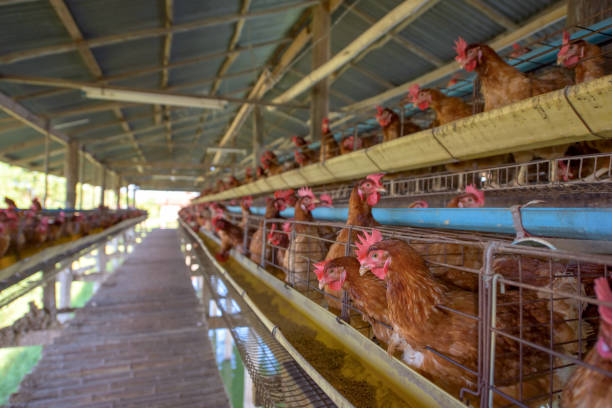
Ethical Considerations and Responsible Farming
While battery chicken cages offer numerous benefits, it’s important to address ethical considerations and ensure responsible farming practices.
Animal Welfare: Provide hens with adequate space to move and exhibit natural behaviors. Enrichment items, such as perches and dust baths, can improve the quality of life for hens in cages.
Cage Design: Choose cage designs that prioritize hen welfare. Look for cages with smooth surfaces and rounded edges to prevent injuries.
Stocking Density: Avoid overcrowding by adhering to recommended stocking densities. Overcrowding can lead to stress, disease, and reduced egg production.
Regular Monitoring: Regularly monitor the health and well-being of your hens. Identify and address any signs of distress or illness promptly.
Training and Education: Provide your workers with adequate training on animal welfare and responsible farming practices.
Environmental Sustainability: Implement practices to minimize the environmental impact of your farm. This includes proper manure management, waste reduction, and energy conservation.
Community Engagement: Engage with your local community and address any concerns they may have about your farming practices.
Long-Term Cost Analysis and ROI
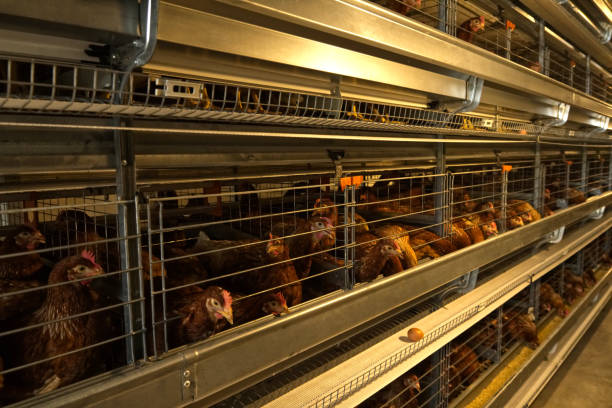
While the initial investment in battery chicken cages can be significant, it’s important to consider the long-term cost savings and return on investment (ROI).
Reduced Labor Costs: Automation can significantly reduce labor costs associated with egg collection, feeding, and manure removal.
Increased Egg Production: Optimized management practices and improved hygiene can lead to increased egg production per hen.
Reduced Feed Wastage: Cages allow for better control over feed consumption, which can translate into significant cost savings.
Lower Mortality Rates: Improved hygiene and disease control can lead to lower mortality rates, reducing the number of replacement hens needed.
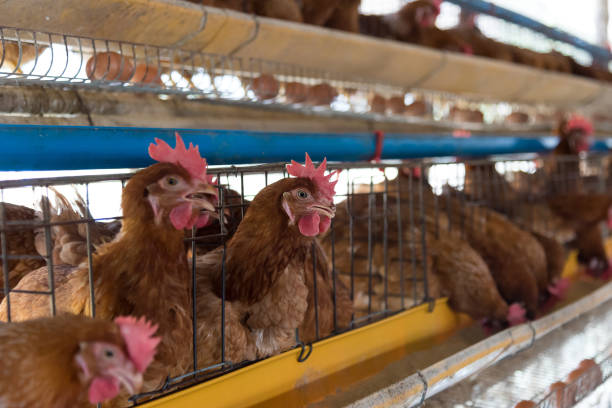
Higher Egg Quality: Proper management and hygiene can result in higher egg quality, which can command a premium price in the market.
Government Regulations and Support in Uganda
Familiarize yourself with the relevant government regulations and support programs for poultry farmers in Uganda.
Registration and Licensing: Ensure that your farm is properly registered and licensed with the relevant government agencies.
Building Codes: Adhere to building codes and regulations for poultry houses.
Animal Welfare Standards: Be aware of any animal welfare standards or guidelines that may be in place.
Government Support Programs: Explore available government support programs, such as grants, loans, and training programs, that can help you establish and operate your poultry farm.
Market Access and Distribution
Developing a robust market access and distribution strategy is essential for selling your eggs and maximizing your profits.
Market Research: Conduct market research to identify your target customers and their preferences.
Distribution Channels: Establish relationships with retailers, wholesalers, and other distributors.
Branding and Marketing: Develop a strong brand and marketing strategy to promote your eggs.
Quality Control: Implement strict quality control measures to ensure that your eggs meet the standards of your target market.
Conclusion
Investing in battery chicken cages for a 30,000-bird poultry farm in Uganda can be a strategic move towards optimizing productivity, reducing costs, and maximizing profitability. However, it’s essential to prioritize animal welfare and implement responsible farming practices. By carefully selecting the right cage system, integrating automation, implementing effective management strategies, and adhering to ethical considerations, you can build a sustainable and successful poultry business that contributes to the growing demand for eggs in Uganda. Furthermore, staying informed about government regulations, availing government support and building strong market access will be key ingredients in this recipe for success. By combining the efficiencies of modern battery cage systems with a commitment to ethical and sustainable practices, the poultry farmer can establish a profitable farm.



